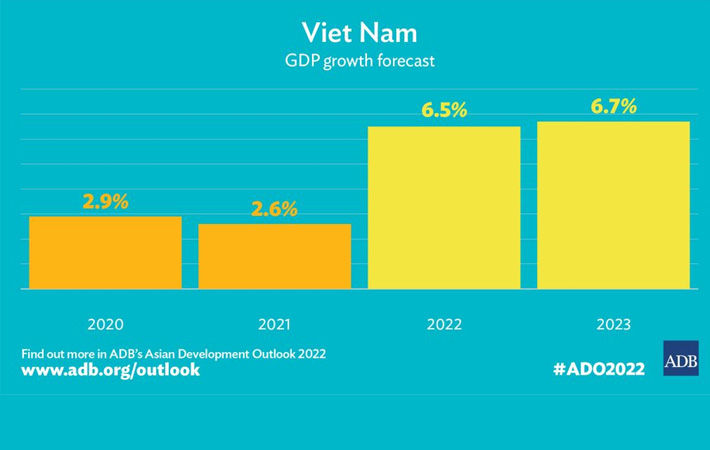
“The renewed COVID-19 outbreak hindered Vietnam’s economic recovery, tightened the labour market and disrupted manufacturing and supply chains in 2021,” said ADB country director for Vietnam Andrew Jeffries.
“The high vaccination rate enabled the government to abandon harsh containment measures. This timely shift of the pandemic containment strategy helped restore economic activity and reduce bottlenecks in the business environment,” he was quoted as saying by an ADB press release.
A recovering labour market, along with monetary and fiscal stimulus measures of the government’s Economic Recovery and Development Programme, will spur industrial growth by a projected 9.5 per cent in 2022, ADB said in its Asian Development Outlook (ADO) 2022.
Agriculture output is expected to grow 3.5 per cent this year, on revived domestic demand and rising global commodity prices, it said.
The reopening of tourism in mid-March and easing of pandemic controls are expected to boost services, with the sector forecast to grow by 5.5 per cent this year.
Accelerated public funding disbursements will drive construction and related economic activities. In tandem with the economic revival and the uncertainty of global oil prices, inflation is expected to accelerate to 3.8 per cent in 2022 and 4 per cent in 2023.
Improved coordination between the central and local governments and restored labour mobility will continue to build domestic and foreign investor confidence, ADB said.
The ADO 2022 also highlighted near-term downside risks that could cloud Vietnam’s recovery. The high COVID-19 infections since mid-March, if not abated, could obstruct the economy’s return to normalcy this year.
A slowing global recovery and a surge in global oil prices from the Russian invasion of Ukraine would affect Vietnam’s external trade and inflation. Recovery also depends on the government’s speedy and effective rollout of the economic recovery and development programme.
Fibre2Fashion News Desk (DS)